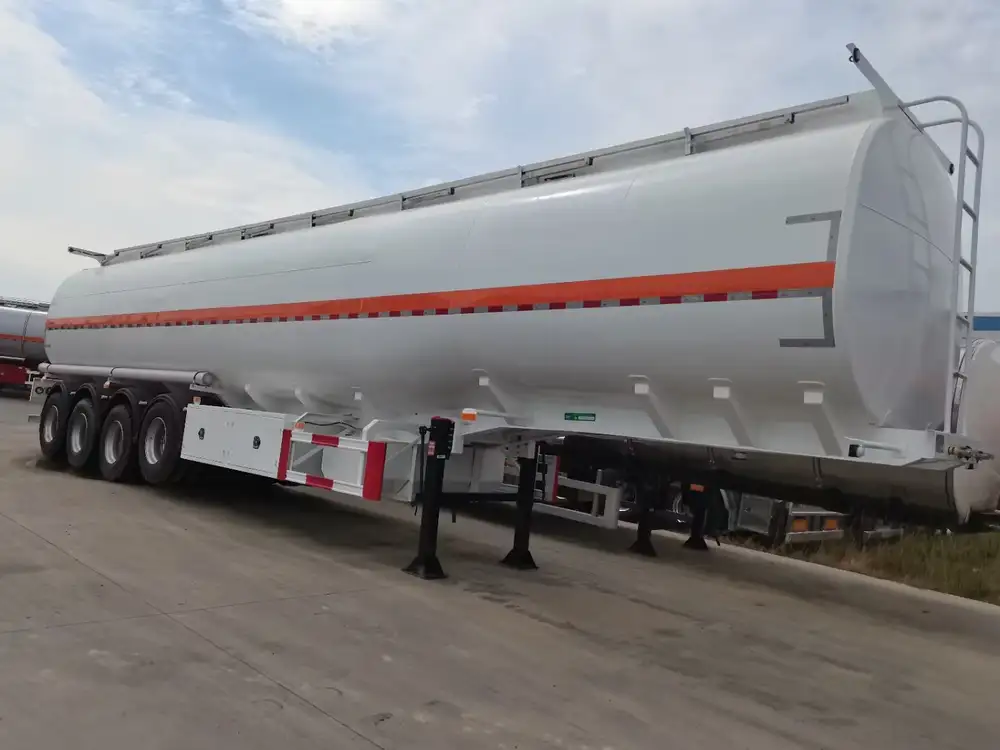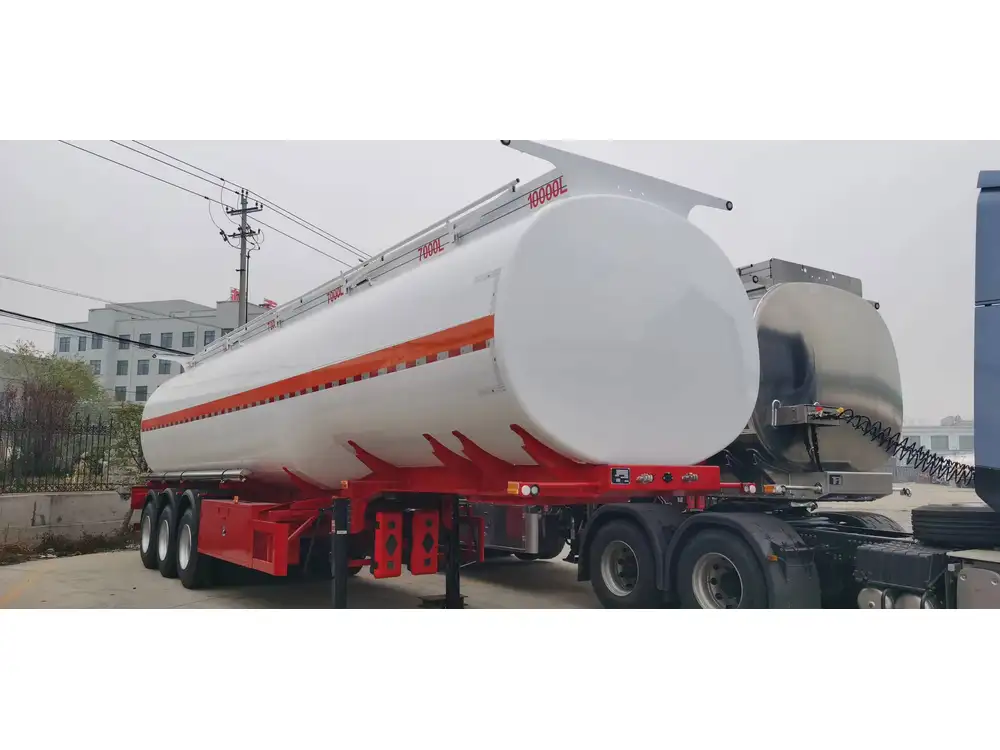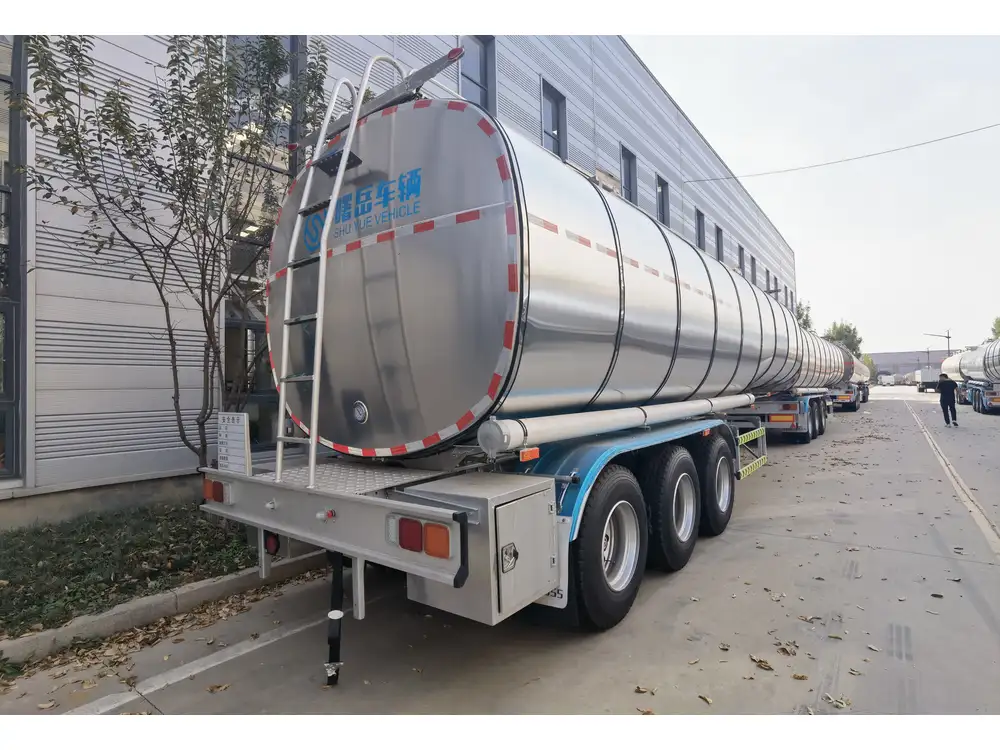In the world of transportation and logistics, understanding the intricacies of flatbed trailers is critical for ensuring safe and efficient load hauling. One such aspect is the length of the load chain used for securing cargo. This comprehensive guide will delve into the various factors influencing load chain length, standards, and practical considerations for users to optimize their flatbed trailer operations.
Understanding Load Chains in Flatbed Trailers
What Is a Load Chain?
A load chain, in the context of flatbed trailers, refers to the linked system of alloy steel or synthetic components used for securing and stabilizing loads during transportation. These chains are vital for preventing cargo movement, which can lead to accidents and damage. Typically, load chains are used in conjunction with binders, hooks, and other securing techniques to ensure the safe transport of goods.

Importance of Load Chain Length
The length of the load chain directly influences the effectiveness of load securing. An appropriate length allows for better flexibility, adaptability to various load sizes, and ease of handling. Conversely, using chains that are too short may compromise safety, while overly long chains can lead to inefficiencies and increased wear.
Factors Influencing Load Chain Length
1. Type of Cargo
The nature of the cargo being transported is the foremost determinant of load chain length. Heavy, bulky items may require longer chains to properly anchor and distribute the weight, while smaller, compact loads may only necessitate shorter chains.
| Cargo Type | Suggested Load Chain Length |
|---|---|
| Lumber/Logs | 20-30 ft |
| Construction Materials | 15-25 ft |
| Machinery | 25-35 ft |
| Vehicles | 15-20 ft |

2. Flatbed Trailer Size and Configuration
Flatbed trailers come in various sizes and configurations. Standard flatbed trailers are typically 48 to 53 feet long but can vary. The dimensions of the trailer can impact the length of the load chain required. A larger trailer generally necessitates longer chains to secure the load appropriately across the greater distance.
3. Local Regulations and Standards
Different regions have specific regulations governing load security methods. These laws often dictate the minimum requirements for load chain use, including the length and strength of securing devices. It is crucial for operators to familiarize themselves with local guidelines, such as those from the Federal Motor Carrier Safety Administration (FMCSA) in the United States, to remain compliant.
4. Weather Conditions
Weather factors, including wind, rain, and snow, can significantly influence the requirements for load securing equipment. In adverse weather conditions, longer chains may be advantageous, providing additional flexibility for adapting to shifting conditions and ensuring that loads remain stable.

Load Chain Safety: Best Practices
Proper Chain Selection
Choosing the correct load chain is the foundation of safe cargo transport. Operators should consider the following:
- Grade and Material: Ensure chains are made of high-strength steel and conform to industry standards (e.g., ASTM, ISO).
- Weight Capacity: Select chains with weight capabilities exceeding the load weight by at least 20-25% for safety.
Inspecting Load Chains
Routine inspections of load chains are vital. Look for signs of wear, fraying, or deformities. Chains that show any signs of damage should be replaced immediately to prevent catastrophic failures during transport.

Inspection Checklist
| Inspection Item | Frequency |
|---|---|
| Visual Checks | Before each use |
| Wear/Fray Analysis | Weekly |
| Weight Capacity Testing | Monthly |
| Compliance Verification | Quarterly |
Load Distribution Techniques
Ensuring an even distribution of weight across the trailer is crucial. Uneven loads can shift during transit, increasing the risk of accidents. Operators should utilize blocking, bracing, and dunnage in addition to load chains to achieve optimal weight distribution.
Using Load Chains Effectively

Loading Protocols
To maximize the effectiveness of load chains, follow these proven loading protocols:
- Center the Load: Position the load evenly on the trailer.
- Utilize Chains Properly: Ensure that load chains are threaded through appropriate anchor points and tensioned adequately.
- Employ Multiple Chains: For larger and heavier loads, utilize multiple chains to enhance security.
Securing Techniques
- Ratchet Binders: Utilize ratchet binders to tension the chains firmly around the load.
- Locking Mechanisms: Employ locking hooks or mechanisms that prevent accidental disengagement of the load chain.
Load Chain Length Calculation

Formula for Determining Load Chain Length
To calculate the ideal load chain length for securing cargo, consider the following formula:
[ \text{Total Chain Length} = 2 \times (\text{Load Height} + \text{Load Width}) + \text{Extra Length} ]Where:
- Load Height: The height of the cargo.
- Load Width: The width of the cargo.
- Extra Length: Additional length for securing the load (typically 5-10 ft, depending on securement method).
Example Calculation
Suppose you are securing a cargo with a height of 4 feet and a width of 7 feet. Using our formula:
[ \text{Total Chain Length} = 2 \times (4 + 7) + 5 = 2 \times 11 + 5 = 22 + 5 = 27 \, \text{ft} ]Thus, at least 27 feet of load chain would be required in this situation.
Conclusion: Ensuring Safety and Efficiency in Load Securing
Optimizing the length of load chains for flatbed trailers is not merely a matter of following a standard; it’s about understanding the complexities of the cargo and the trailer system as a whole. By considering factors such as cargo type, trailer size, regional regulations, and environmental conditions, operators can ensure that they select the appropriate load chain length.

Final Recommendations
- Stay Educated: Keep abreast of industry best practices and evolving regulations to enhance safety measures.
- Implement a Maintenance Schedule: A proactive approach to inspecting and replacing load chains ensures safety and minimizes risks on the road.
- Integrate Training Programs: Regular training for staff on securing loads effectively can significantly reduce the likelihood of accidents related to load shifting.
By following these actionable insights and recommendations, flatbed trailer operators can optimize their load securing strategies, enhance safety measures, and ensure efficient transport operations.



